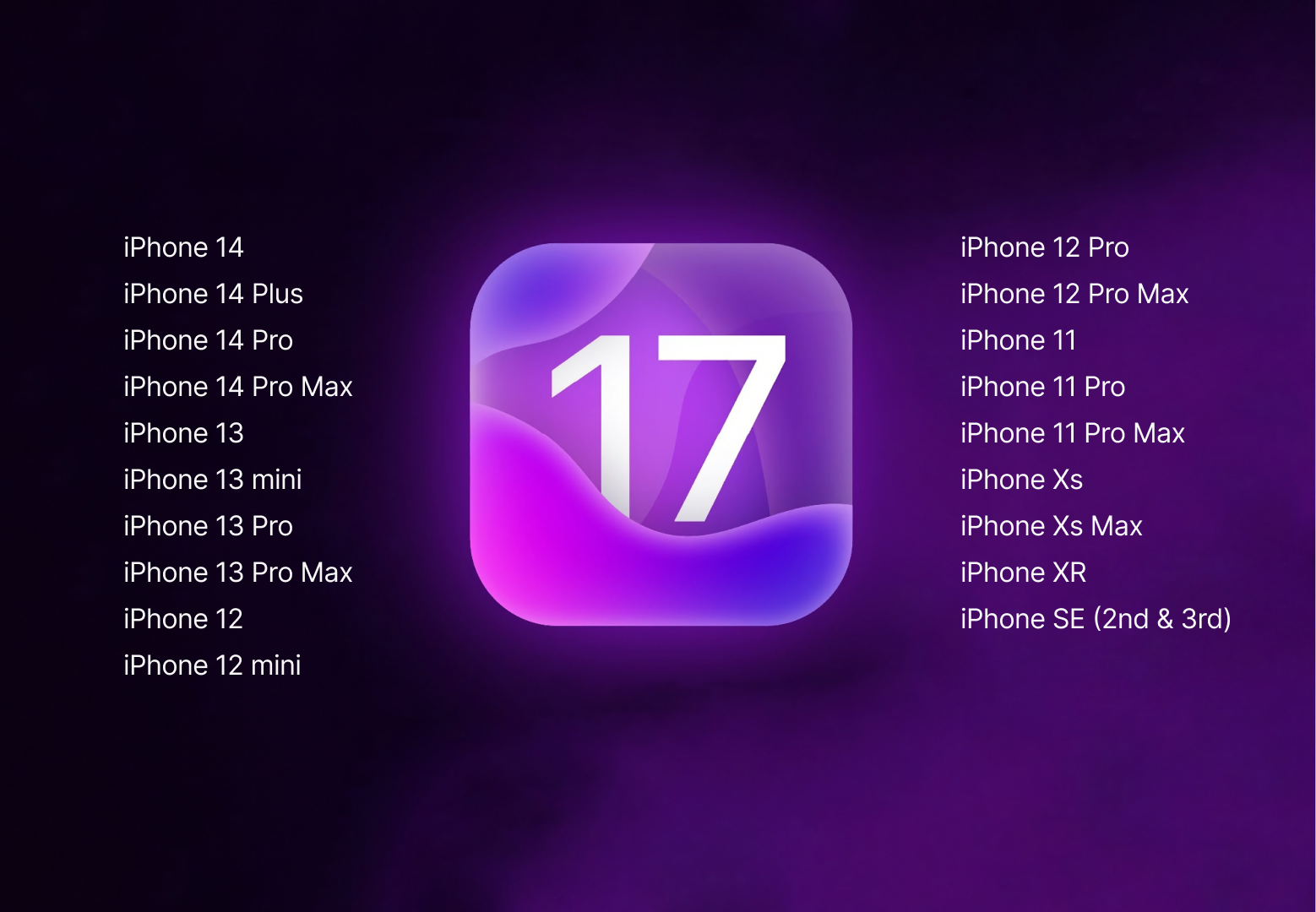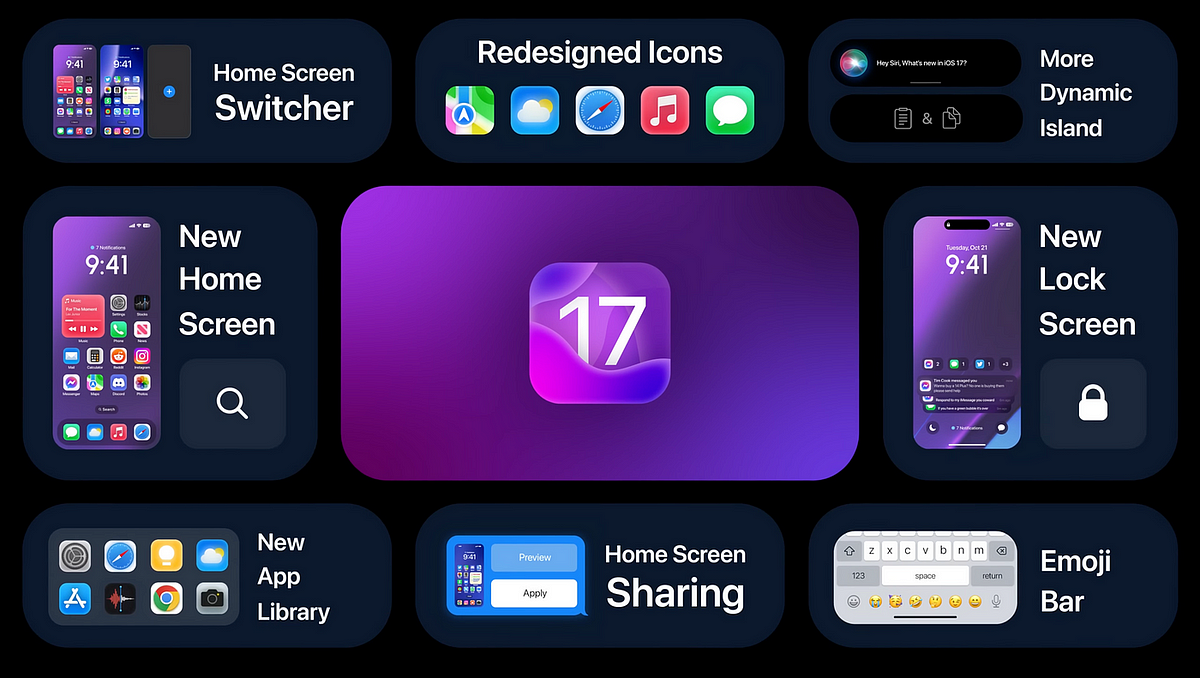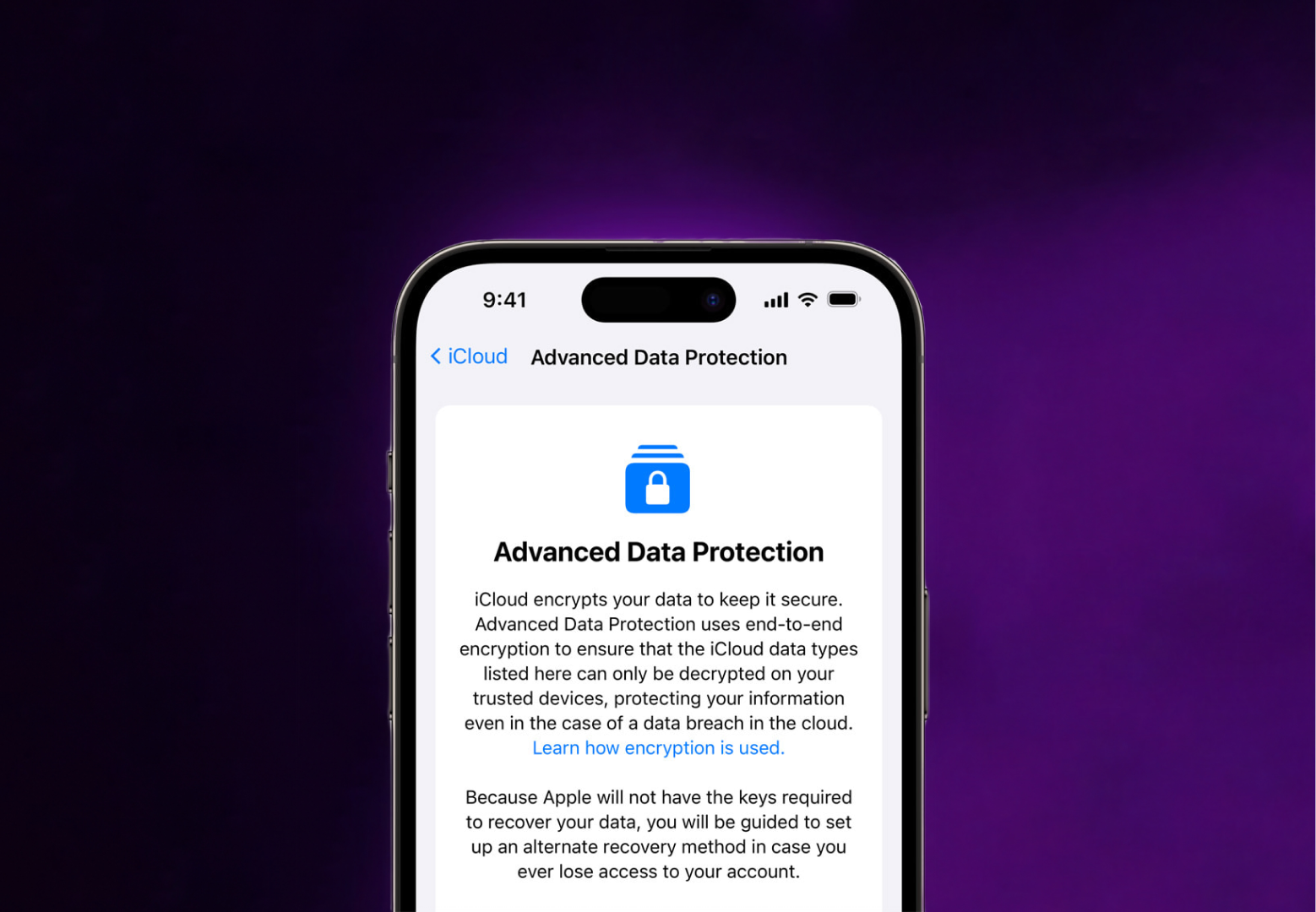Apple's latest event has left the tech world buzzing with anticipation and excitement. From sleek new iPhones to cutting-edge wearables and software updates that promise to elevate our digital experiences, Cupertino has once again raised the bar for innovation.
Staying ahead of the curve with technological advancements is imperative. And here comes Apple's iOS 17, a formidable player that's set to reshape the landscape of mobile applications. In this article, we'll guide you through the essential elements of iOS 17 and examine its potential to bring significant changes to the world of app design and development.
Who Makes the Cut and Who Doesn't?
While innovation is exciting, it often brings compatibility challenges. As iOS 17 rolls out, older devices may find themselves unable to keep up. iOS 17 is compatible with iPhone XS and newer models, leaving behind some of the older devices. However, you can continue to provide updates for older operating system versions until they become obsolete. This means that even if your app users' devices are older, they will still be able to access app updates as long as your developers offer them.

Enhancing the User Experience with Swift Updates
One of the standout features of iOS 17 is the enhanced collaboration between Swift and C++, resulting in the seamless integration of Swift into C++ projects. This integration has a direct impact on performance, particularly in terms of faster JSON encoding and decoding. Swift's modern features and SwiftUI, a user interface toolkit, combine to create a development environment that promises an unparalleled user experience.
SwiftUI introduces an array of new controls that make crafting rich and interactive interfaces a breeze. If you are seeking to create visually stunning apps, SwiftUI simplifies the process. What's more, SwiftUI also brings enhanced animation APIs to the table. These, coupled with iOS 17's new transitions, breathe life into user interfaces with captivating visuals and fluid motion. Developers will also appreciate the improved capabilities of Core Data, which offer greater flexibility in app development. The SwiftData integration with Core Data's capabilities and Swift's modern concurrency features streamlines app persistence implementation.
A User-Centric Approach
When designing apps for iOS 17, it's crucial to consider the fundamental characteristics and usage patterns of iPhone users. iPhones are known for their medium-sized, high-resolution screens. Designing app layouts and visuals with these factors in mind is key to a successful user experience.
Ergonomics play a vital role too. Users typically hold their iPhones with both hands and switch between landscape and portrait orientations. An ergonomic design that prioritizes comfort and ease of use can make a significant difference. Moreover, users often interact with their devices at close range, so optimizing for this scenario is essential.
iOS supports a variety of input methods, from multi-touch gestures to onscreen keyboards and voice control. Leveraging these input options allows users to perform tasks conveniently while on the move. App interactions can vary widely, from quick check-ins to extended browsing sessions. Ensuring that your app can seamlessly adapt to these diverse usage patterns and switch between multiple apps is crucial.
Following Apple's best practices is also vital for a great iOS experience. This includes simplifying the user interface, adapting to appearance changes (such as Dark Mode and Dynamic Type), and integrating platform capabilities like biometric authentication and location services.

Protecting User Data
Privacy is a hot-button issue, and Apple takes it seriously. iOS 17 continues Apple's commitment to enhancing user privacy. This update introduces stricter data collection and sharing guidelines, along with mandatory privacy labels in the App Store for business mobile app development services. Additionally, Apple restricts access to photos and calendar events, reducing the ability of websites to track your online activity.
Developers must be transparent about how they use data and ensure their apps comply with these new regulations. Doing so not only builds trust with users but also helps avoid potential issues down the line.
Speed Matters
In the world of mobile apps, speed and responsiveness are paramount. iOS 17 brings several performance improvements and optimizations that can set your app apart from the competition. Expect faster app launch times, heightened responsiveness, reduced memory usage, and smoother animations. These enhancements ensure that users enjoy a seamless and enjoyable experience, whether they're playing a resource-intensive game or multitasking between several apps.
New APIs and Frameworks
iOS 17 introduces a treasure trove of new APIs, frameworks, and libraries that can take your app's functionality to the next level. From augmented reality (AR) enhancements to machine learning capabilities, these tools open up exciting possibilities. Core ML, for instance, optimizes machine learning experiences by improving compression and loading times. Create ML simplifies the process of building models, particularly in image understanding with multi-label classification and interactive evaluation.
The Vision framework enhances image segmentation and provides 3D depth information for human body poses. VisionKit, on the other hand, simplifies the addition of visual lookup and subject-lifting features. The Natural Language Framework boasts improved language support, and the Speech Framework allows for personalized speech recognition with custom vocabularies. These updates empower app developers to create more powerful and user-friendly experiences.
Prioritizing Security
Security remains of utmost importance in the domain of business mobile application development services, and iOS 17 raises the bar yet again. It introduces robust security features aimed at protecting user data and device integrity. Developers must remain vigilant when implementing the latest security criteria, including encryption and biometric authentication. Regular updates and security audits are essential to ensure that your app remains secure in an ever-evolving threat landscape.

Quest for Success
It is safe to say that iOS 17 stands out as a true game-changer. Adaptation, compatibility, design, privacy, performance, and security updates are the cornerstones of this transformative release. To excel in this dynamic environment, embrace change and innovation. iOS 17 marks a seismic shift in the industry. Position yourself to thrive by staying ahead and watching your apps excel. With iOS 17, the possibilities are limitless, and the future of mobile app design and development has never looked brighter.
